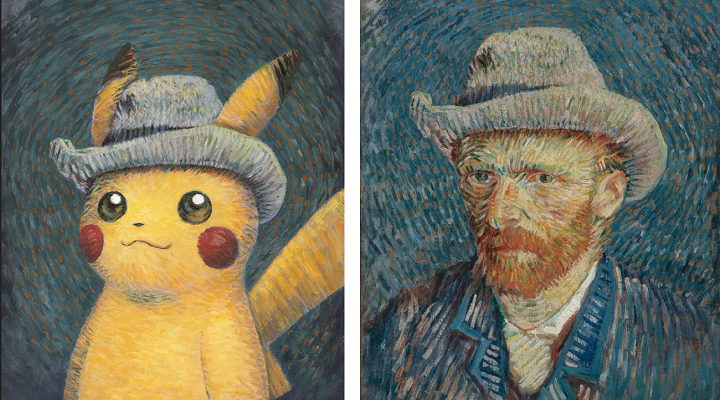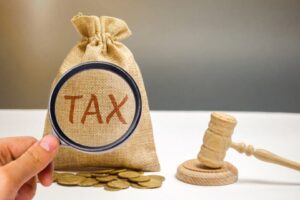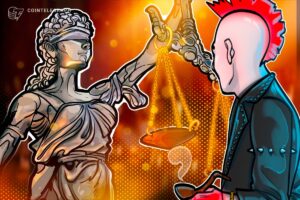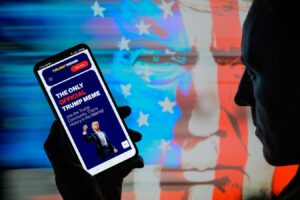How nostalgia and NFTs created a multibillion-dollar collectables market

Pokémon decks, Funko collectables, non-fungible tokens (NFTs), and baseball trading cards. What do these things have in common? They all contribute to the multibillion-dollar market for physical and digital collectables. A report by market research and consultancy firm Market Decipher states that the global collectables market was valued at US$426 billion in 2022 and is predicted to reach US$1 trillion by 2032. The report comprises several markets, including sports memorabilia, sports NFT
NFT products, art collectables, sports trading cards, and toy/animation collectables.
Nostalgia is a key factor
While collecting is certainly not a new hobby, the market, as evidenced by the report, is growing exponentially in recent years due to a variety of factors.
“The shifts we’ve observed [in the collectables market] were influenced by a combination of global events and changing consumer behaviours. The pandemic certainly played a role, as people sought solace in nostalgic hobbies. But beyond that, there has been a global movement towards celebrating pop culture, leading to a surge in demand for collectables,” William Morris, founder of Jeux Mania, a leading e-commerce and bricks-and-mortar retailer in Canada, told Inside Retail.
Fans of franchises like Pokémon, which debuted as a video game in February 1996 before becoming a multi-tiered media corporation, or One Piece, which debuted as a comic book series in 1997, grew up with these pop-culture references in their childhood. Now, they are adult consumers with disposable incomes to spend on beloved childhood pastimes. And even though younger generations, like Gen Z, may not have directly interacted with many of these franchises, their older siblings or colleagues did, and the desire for nostalgia largely drives the market for them as well.
After the successful online launch of Jeux Mania during the pandemic, Morris expanded his business with a physical outlet in the Montreal suburb of Laval, Quebec, in September of this year. The expansion reflects Morris’ belief in the continued growth of the collectables market, especially with digital products.
“When we launched Jeux Mania online in 2020, we tapped into a resurgence of interest in Pokémon cards, driven by both nostalgia and new generations of fans. Over the years, we’ve observed a broader appreciation for collectables, from trading cards to figurines. The future, as I see it, will be a blend of the tangible and digital. While physical collectables will always have a place, I anticipate a rise in digital collectables, potentially integrating augmented reality to enhance the collector’s experience,” Morris explained.
The rise of NFT collectables
Since the first NFT, a generative piece of art titled “Quantum”, was released by digital artists Jennifer and Kevin McCoy in 2014, the world of NFT in retail has changed drastically.
A report by NFT tracking site NonFungible.com and French market analysis firm L’Atelier BNP Paribas, found that NFT profits had jumped from US$82.5 million in 2020 to US$17.7 billion in 2021, marking a 21,000 per cent surge.
DappRadar, a website that provides data and analytics on decentralised applications (DApps) built on blockchain technology, found that the NFT market generated about US$24.7 billion in organic trading volume across blockchain platforms and marketplaces in 2022, a slight decrease from the US$25.1 billion total recorded in 2021.
While the NFT market has declined since its peak in 2021, proponents believe that lower entry points and higher seller engagement may indicate positive long-term sales.
In September, Polygon, a blockchain firm, collaborated with Courtyard.io to facilitate the exchange of tangible Pokémon cards using blockchain technology. Within seconds, all 175 cards available were purchased by card collectors, resulting in an exponential rise in the floor price of the digital collectables, which originally retailed for US$5 a pack.
How the retail industry can get a piece of the collectables pie
Outside of the traditional outlets for collectable cards and figurines, businesses across retail categories are starting to tap into this expanding marketplace.
In September, The Pokémon Company launched a collaboration with the Van Gogh Museum to celebrate the 50th anniversary of the institution. In addition to re-creations of some of Van Gogh’s most iconic pieces, starring beloved Pokémon characters like Pikachu and Snorlax, the collaboration includes collectable cards that showcase the designs in the exhibit.
The collection immediately sold out, as resellers scrambled to collect the cards, which are now selling at a mark-up several times over on resale sites like eBay.
In February, Spotify partnered with Overlord, a start-up specialising in crypto-based services, to launch a new feature called “token enabled playlists”, which allows Spotify Premium subscribers who possess particular NFTs to unlock exclusive playlists. The feature is currently available in select regions, including the US, UK, Germany, Australia, and New Zealand.
These are just a few recent examples of how the retail industry is partaking in the world of physical and digital collectables.
Source link
#nostalgia #NFTs #created #multibilliondollar #collectables #market





